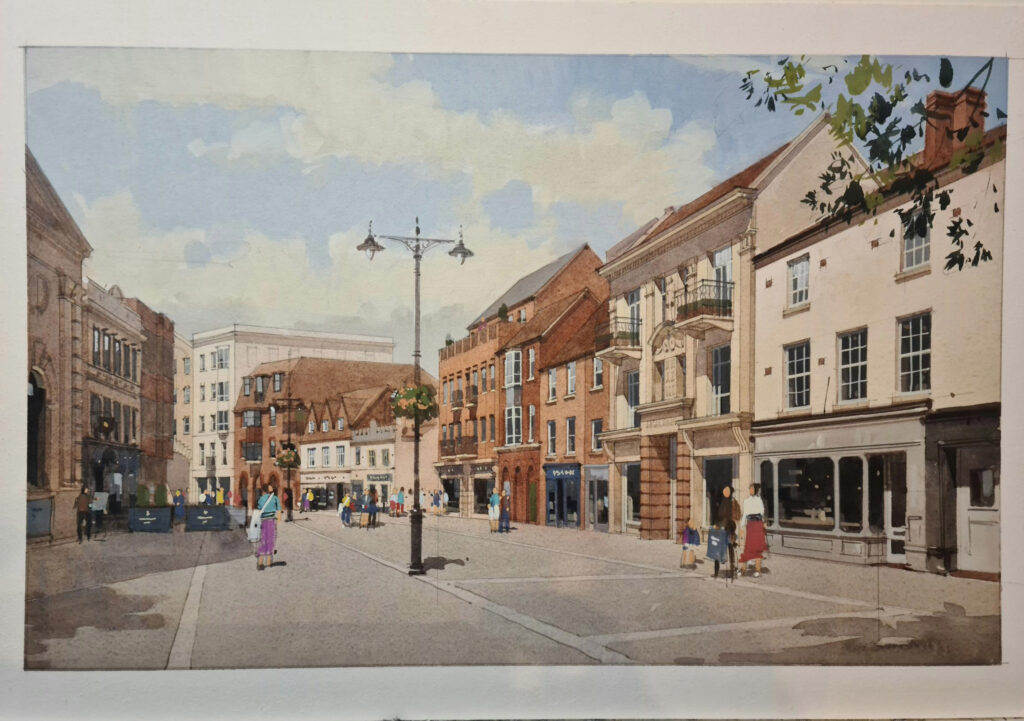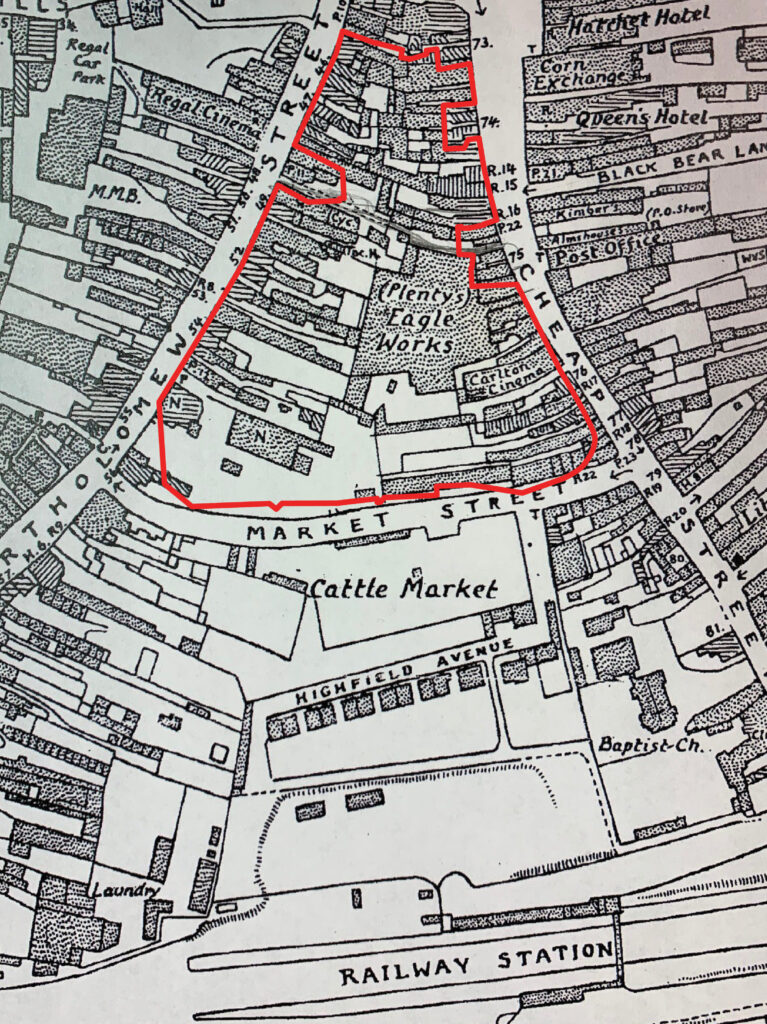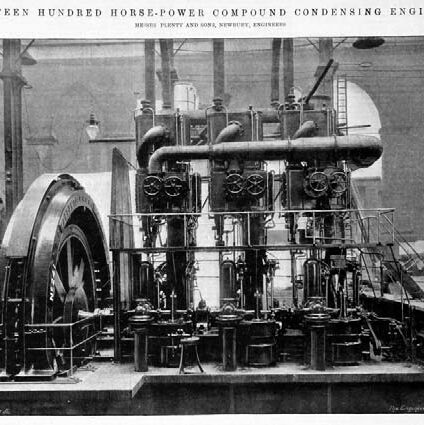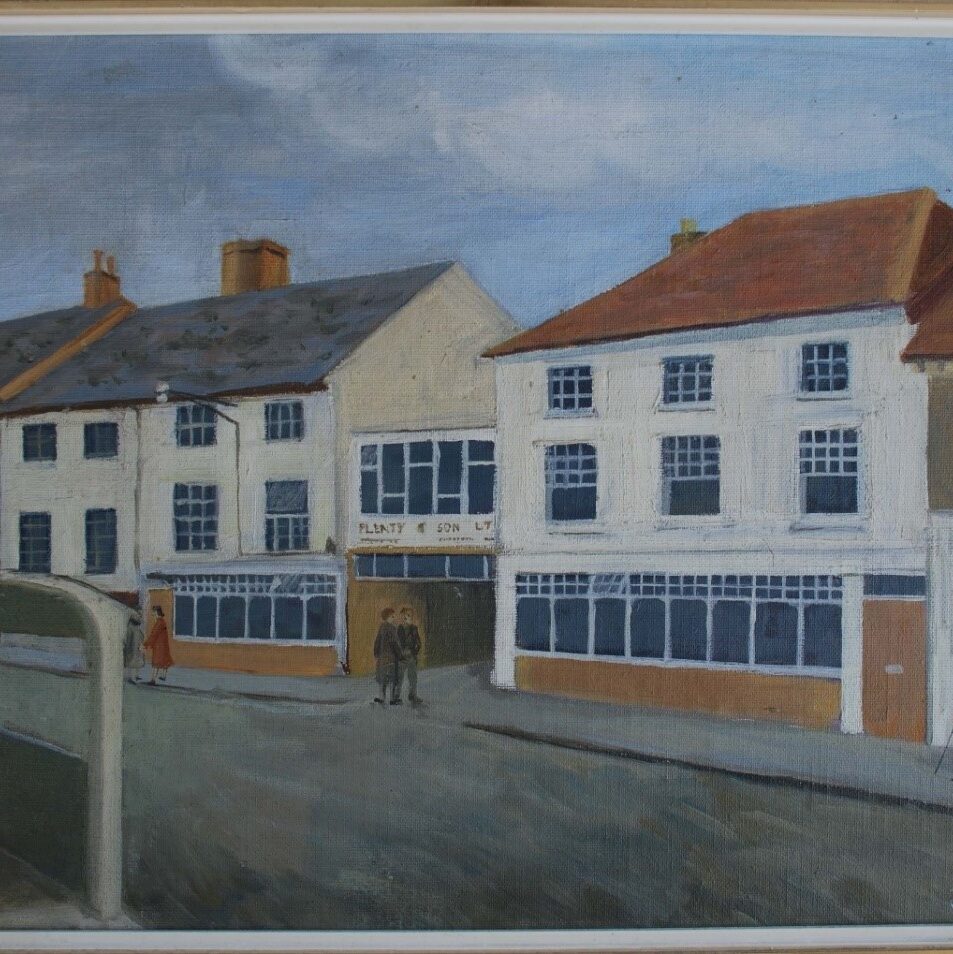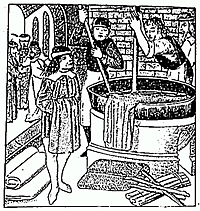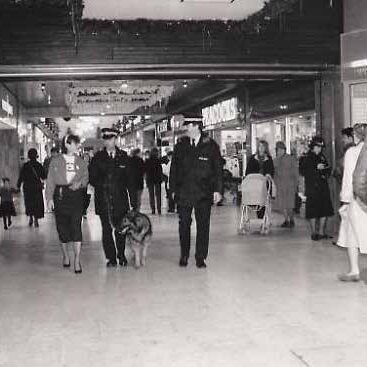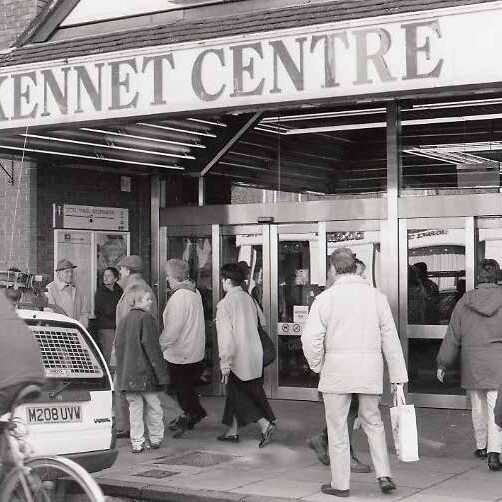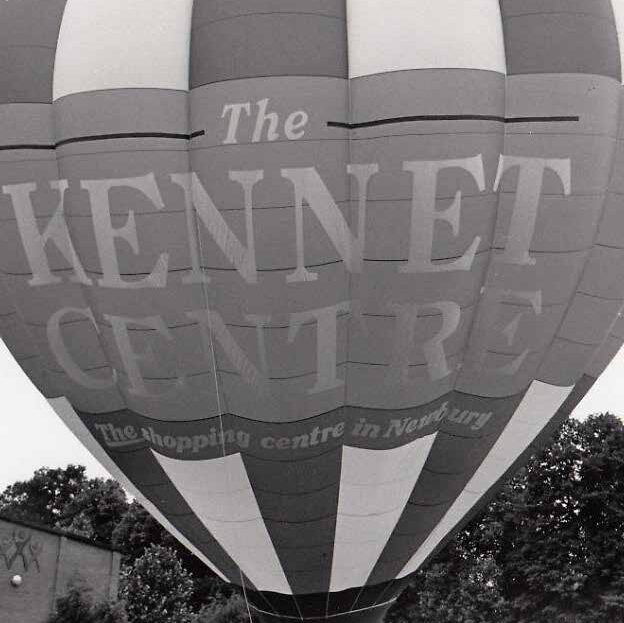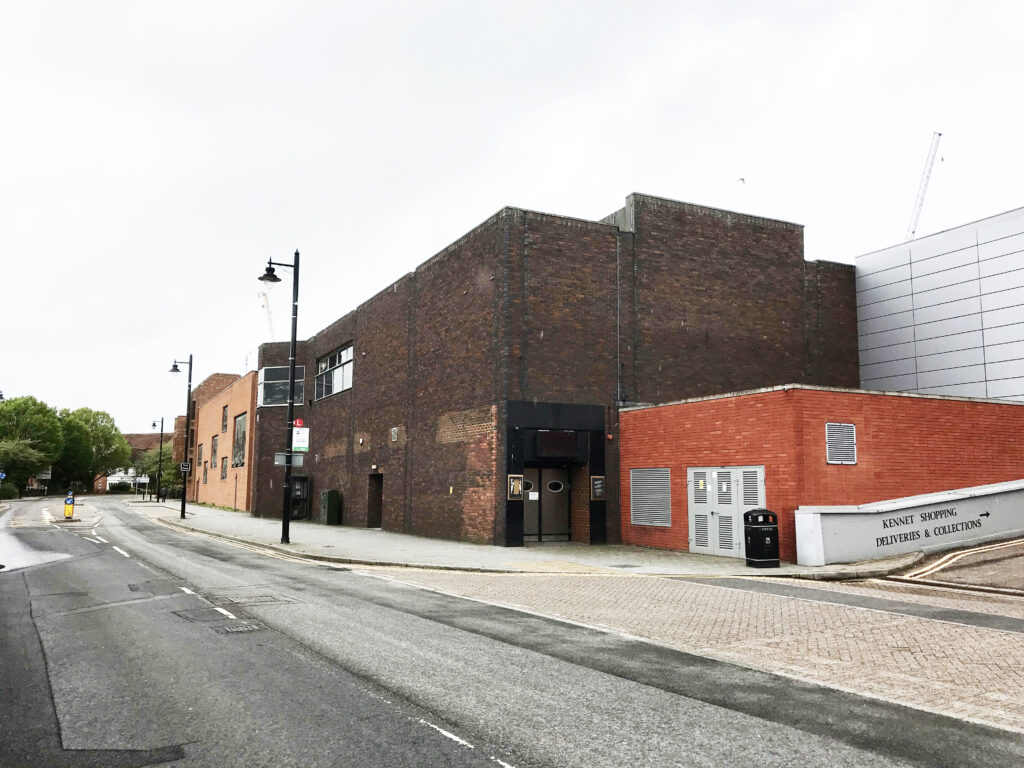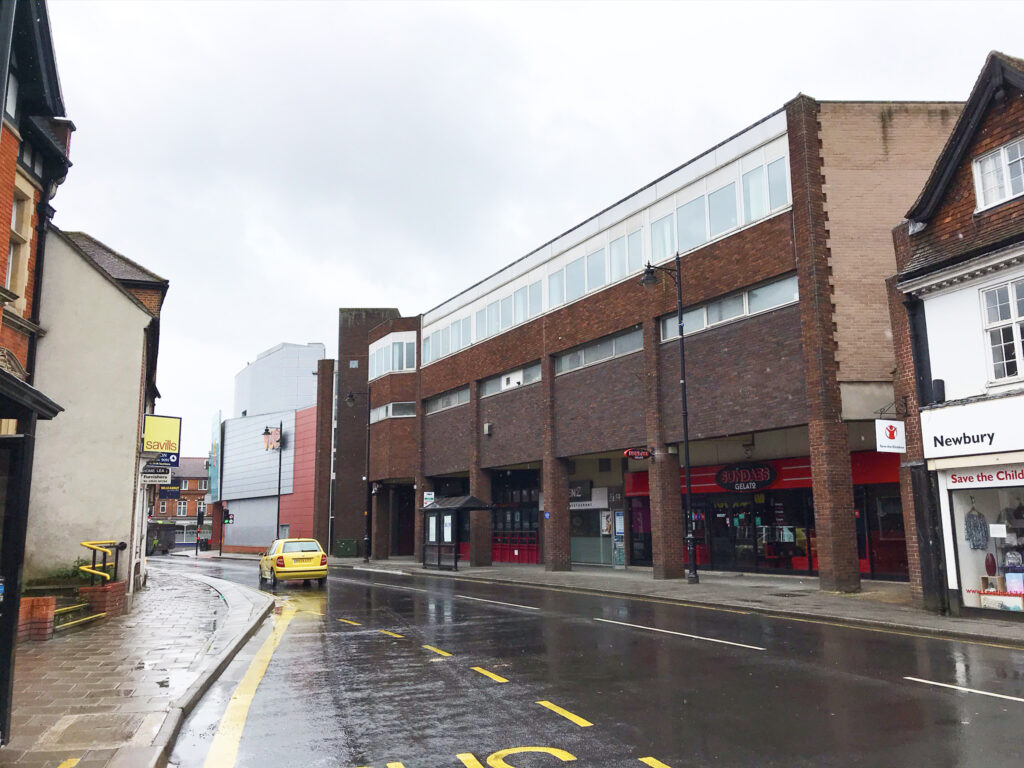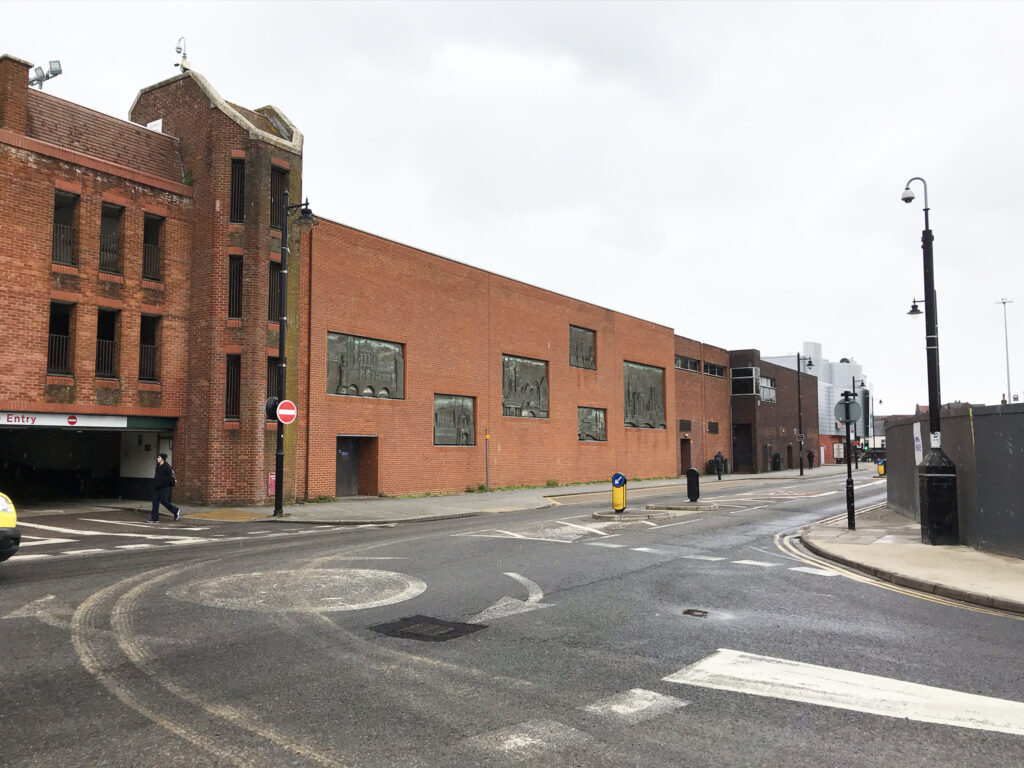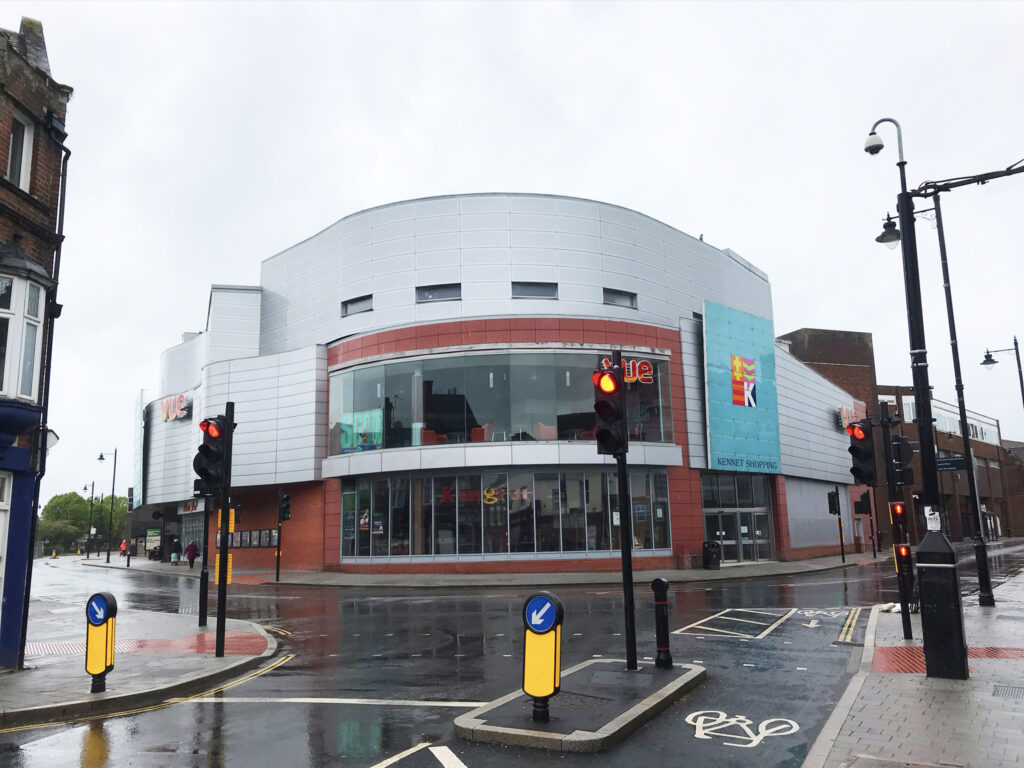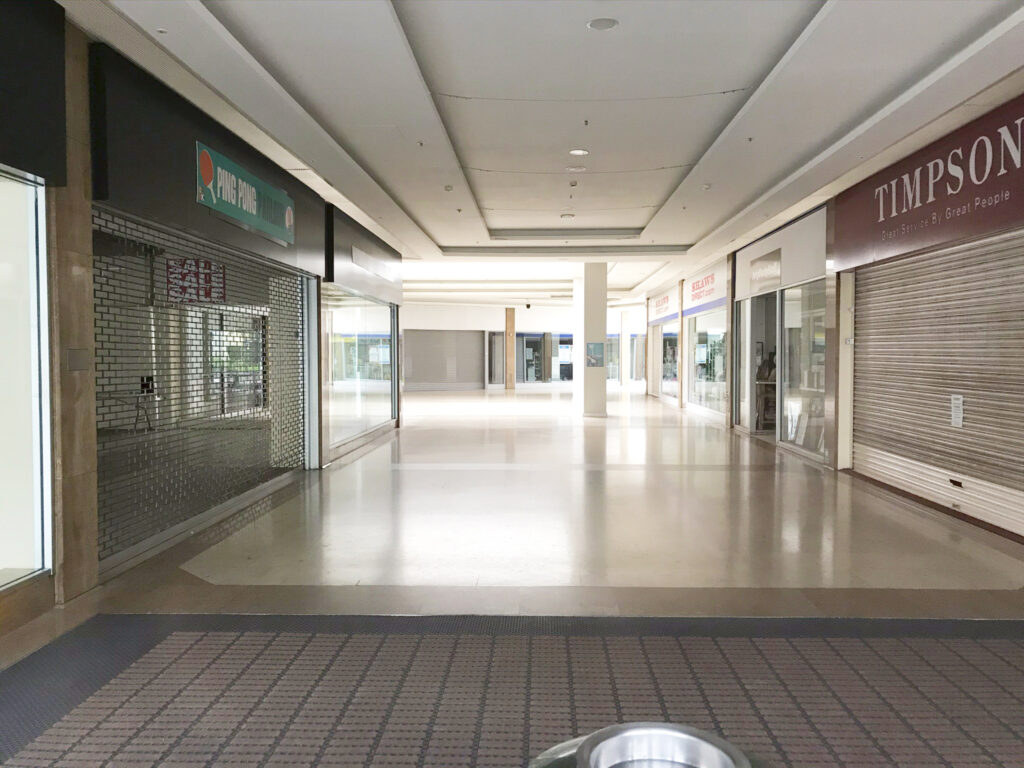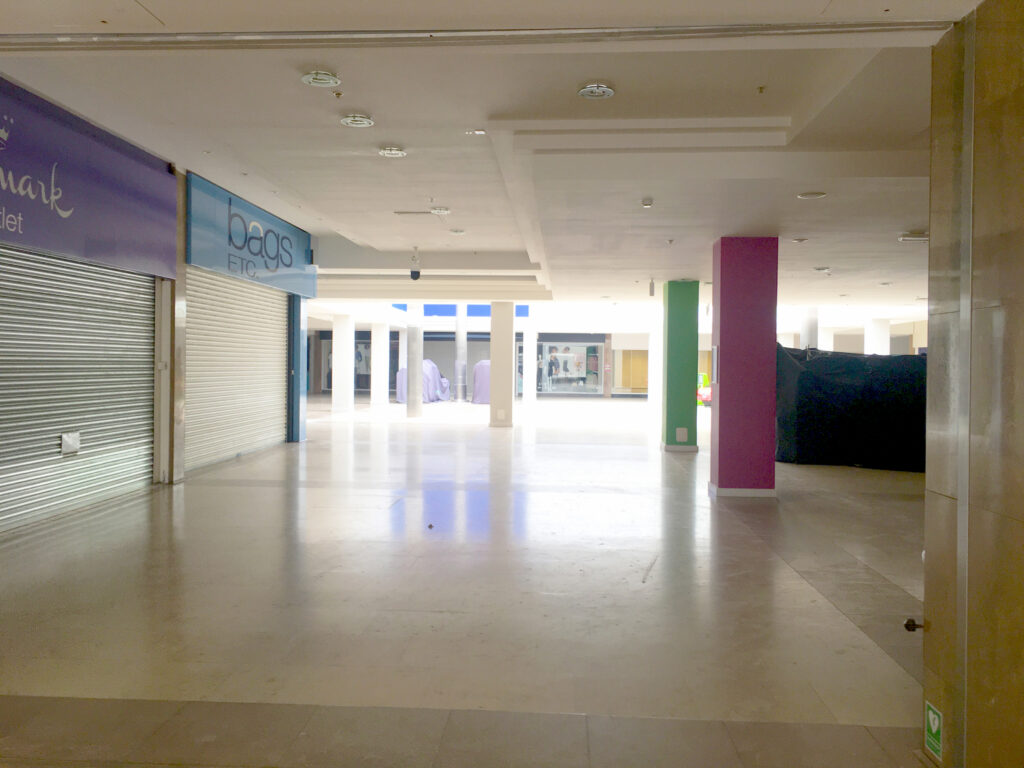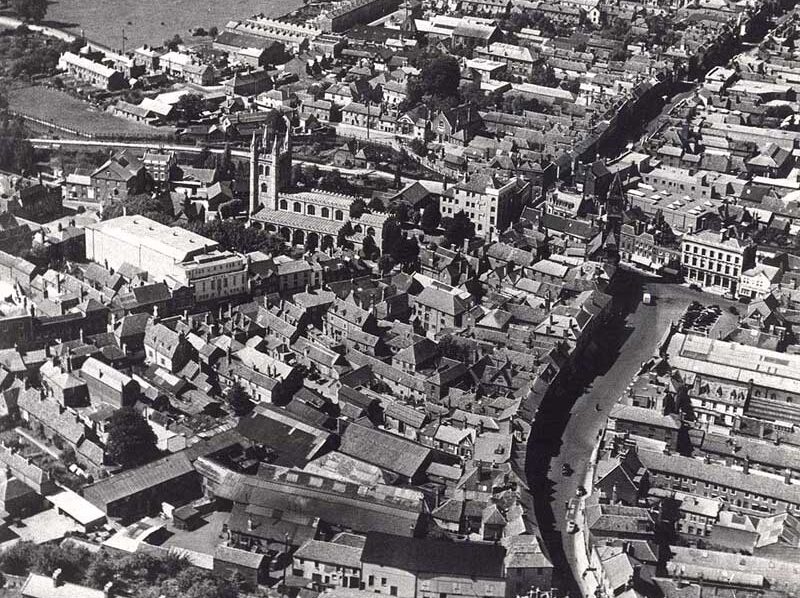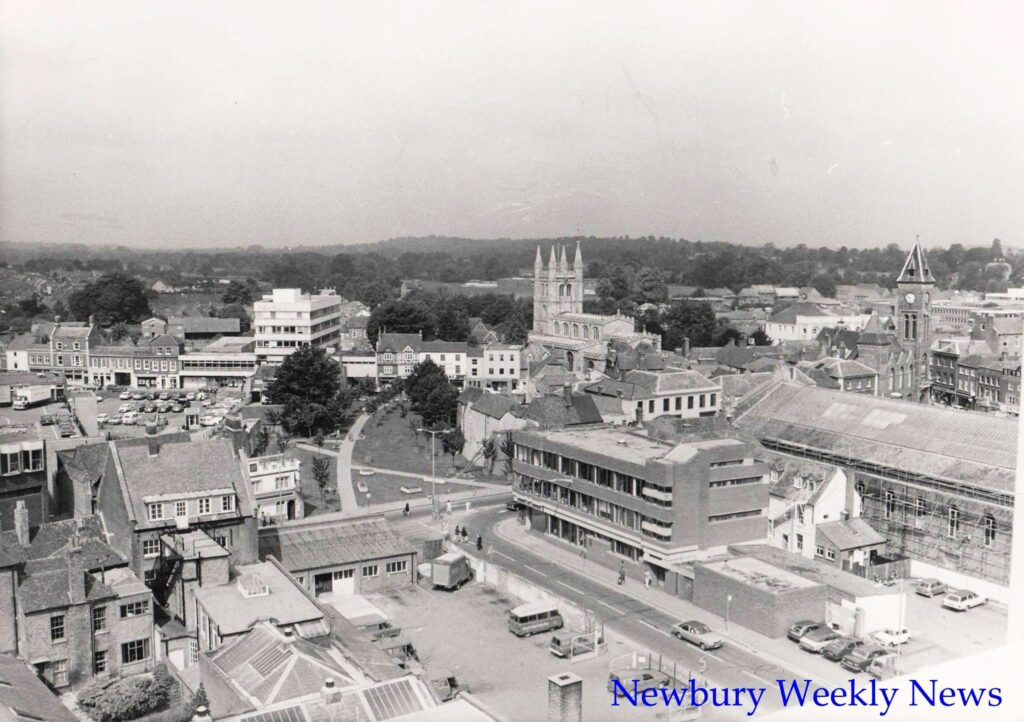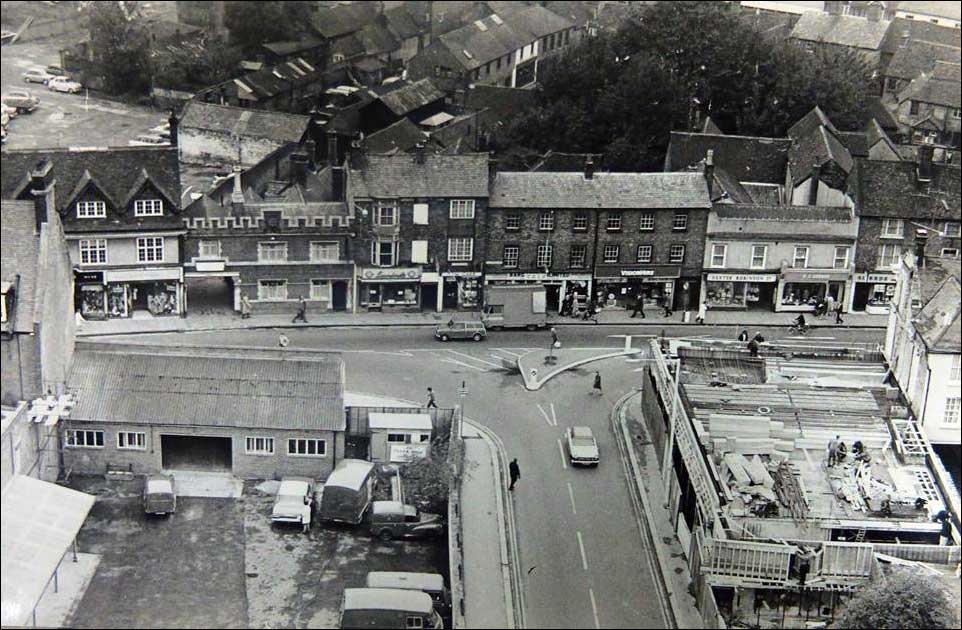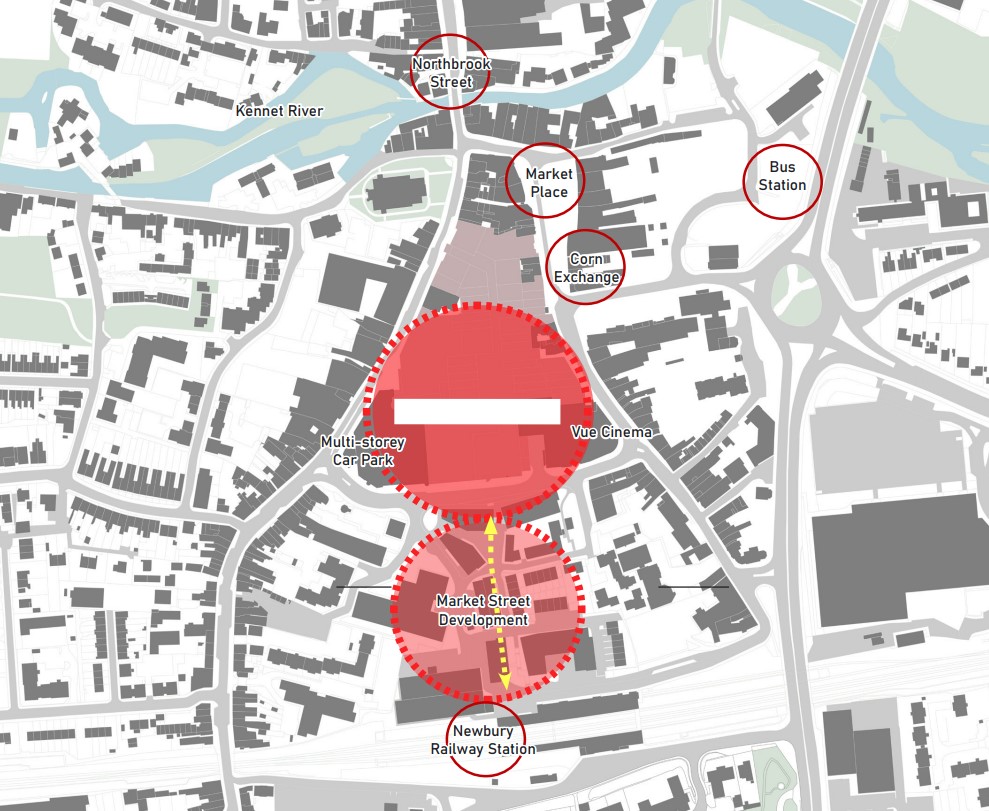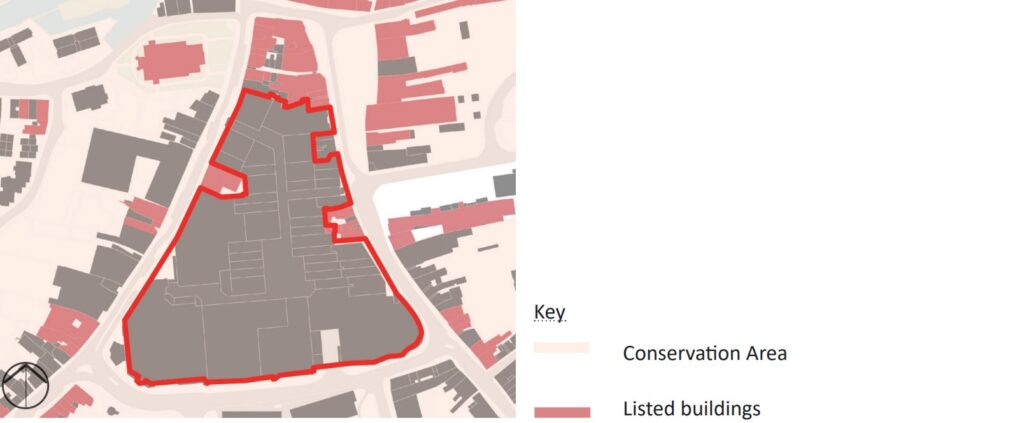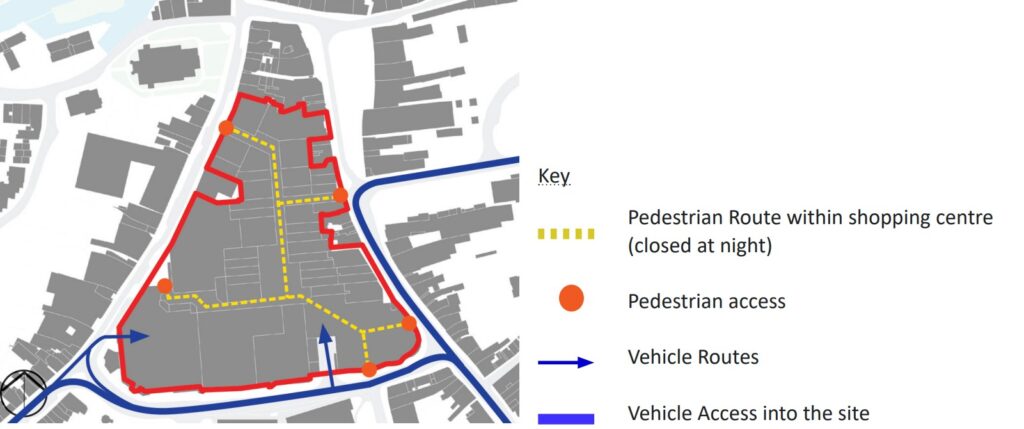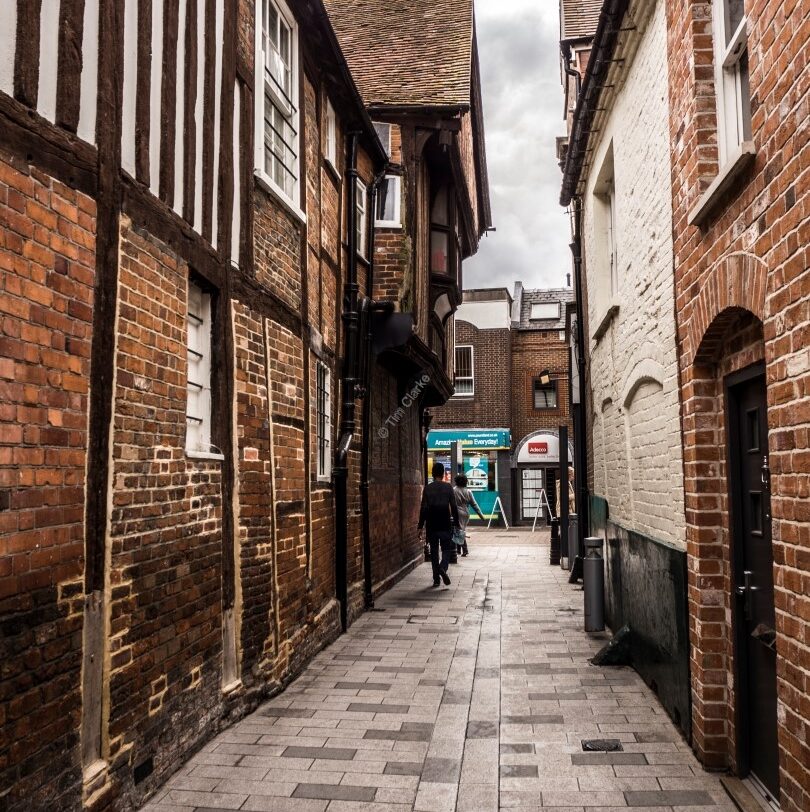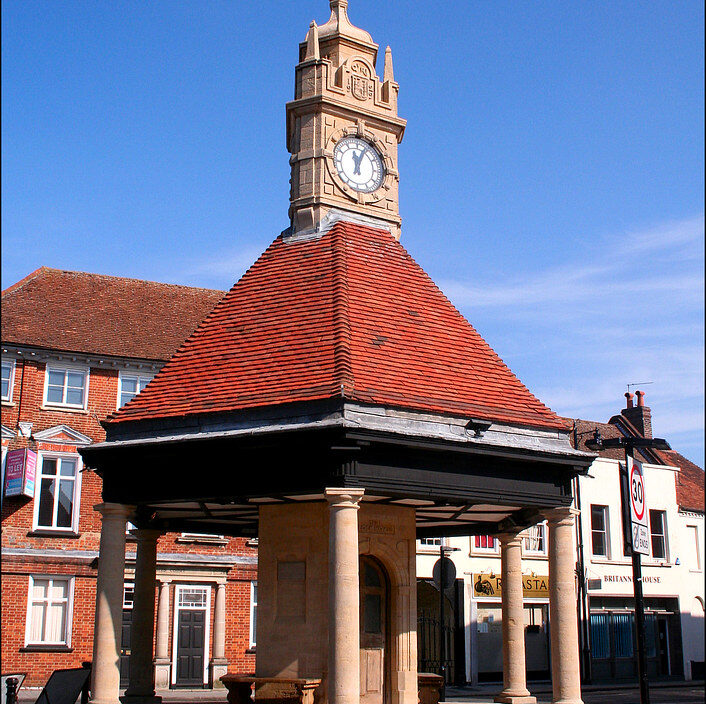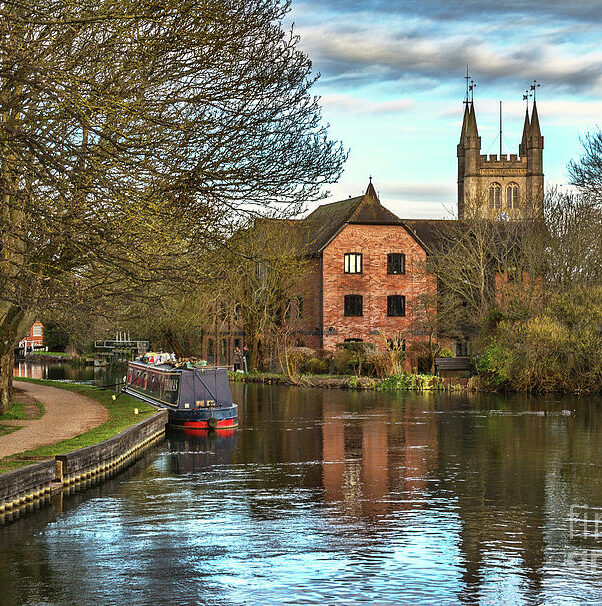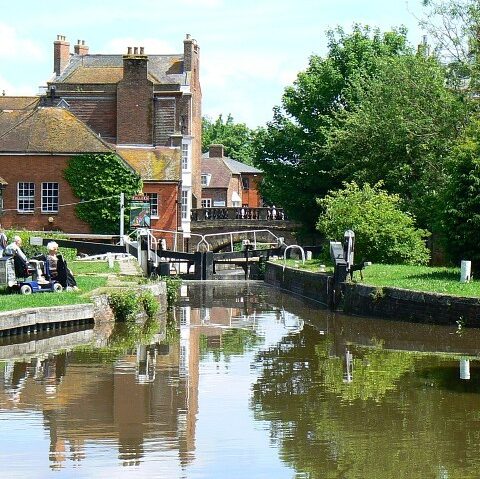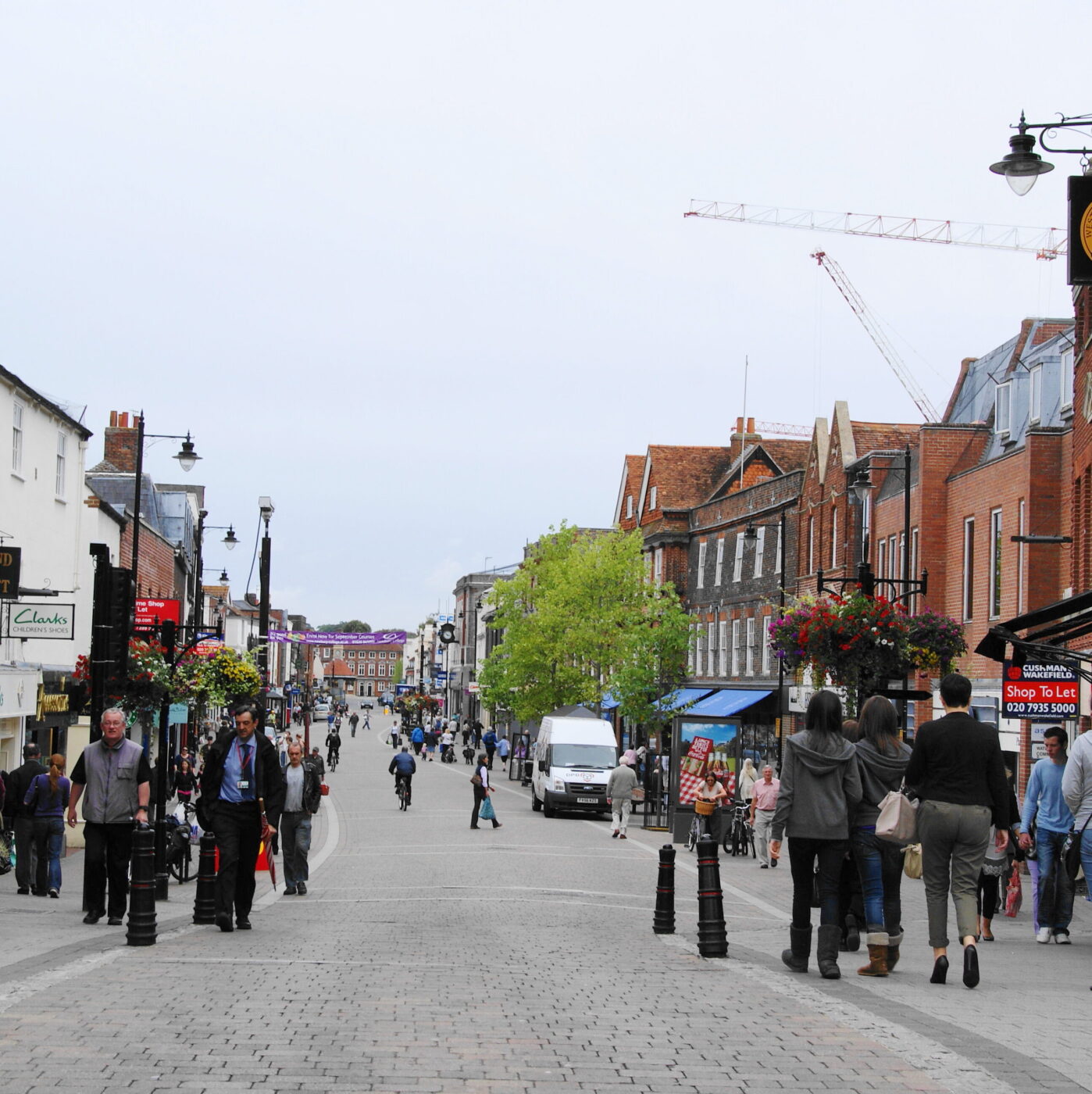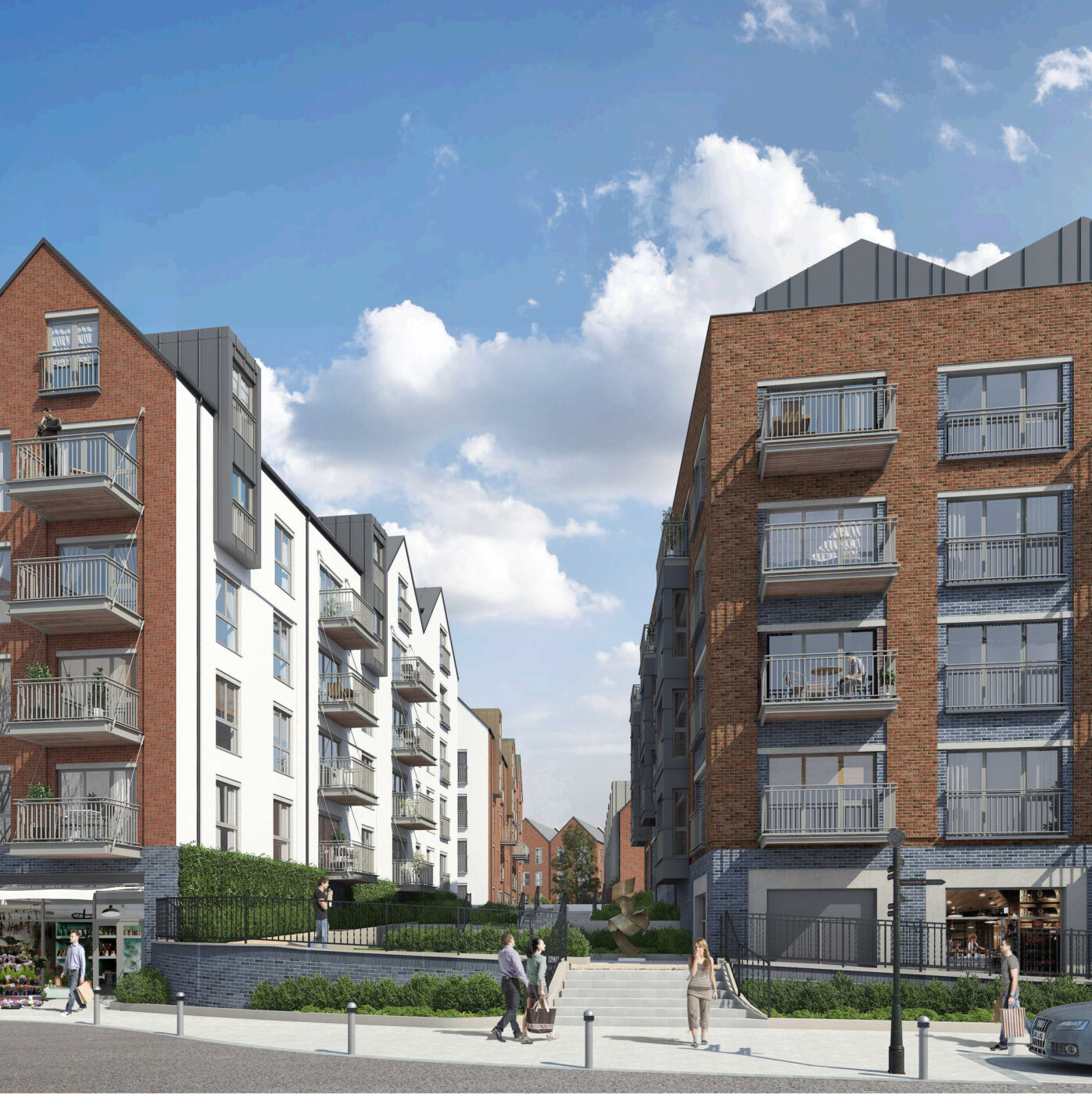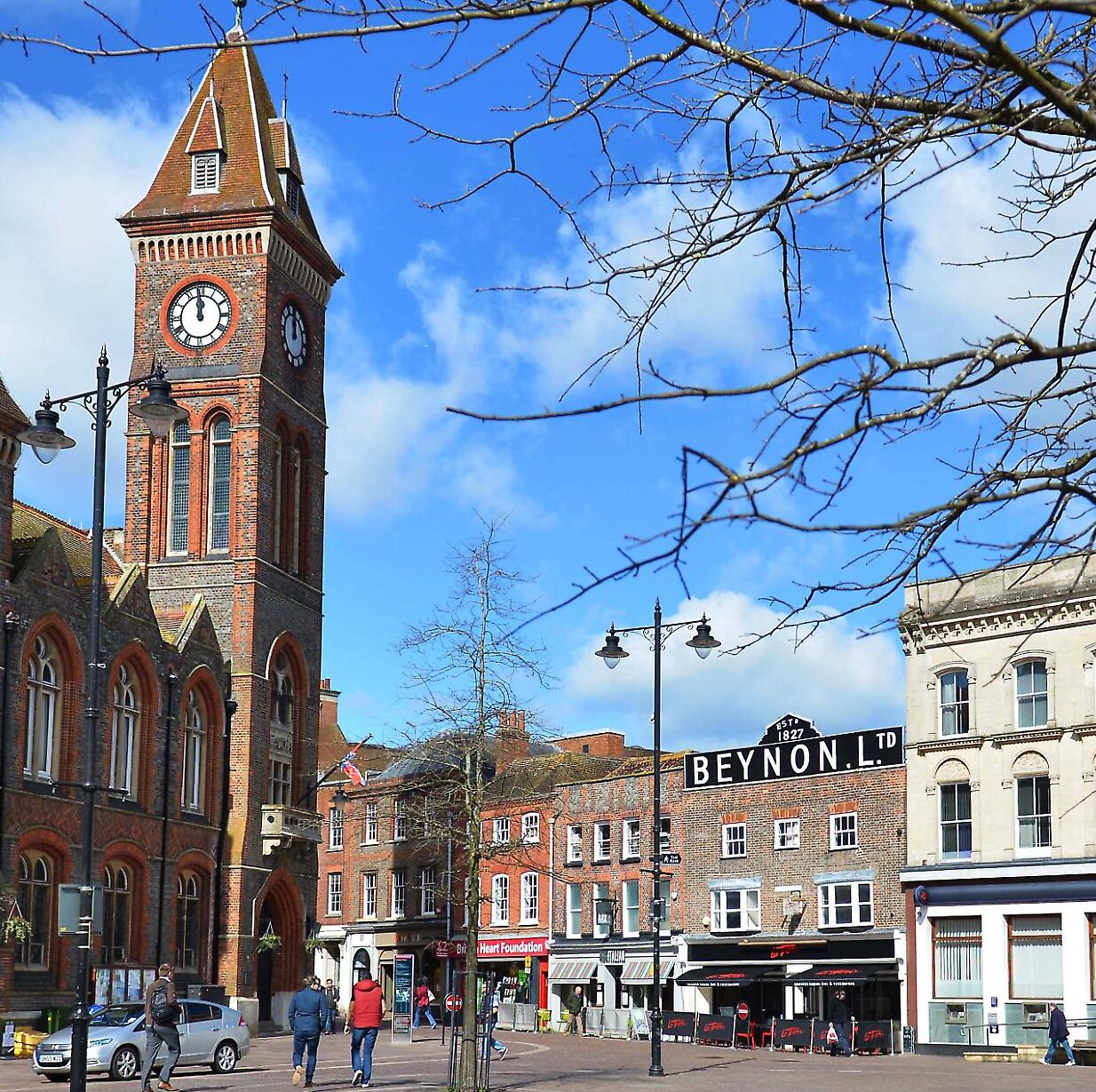Background to the scheme
Click on a heading to read more
Newbury’s industrial history
Historically the site has been home to small and large-scale industries extending over at least 600 years and including cloth and marine iron works.
The site currently occupied by the Kennet Shopping Centre (since 1974) has always been an important part of the history of Newbury. As early as the 15th century this site was renowned across Europe for the production and manufacture of high quality twill-backed cloths. From 1465 to 1533, the Winchcombe family were known as clothiers par excellence, with their clothing being highly sought after all across Europe. Of particular note was the manufacture of ‘Kerseys’, 1 yard by 16 yard pieces of fabric dyed in rich tones using woad, a yellow flowered plant grown in Britain that produced high quality dye.
Towards the end of the 18th century, the centre of Newbury enjoyed a more industrial heritage. This site became Plenty’s Eagle Iron Works, an engineering works founded by William Plenty who went on to design and build steam engines and boilers for ships across the world, including the Royal Navy, and lifeboats for the Royal National Lifeboat Institution. One can see from the map of 1880 the large works in the centre of the site and the smaller narrower plots that formed the remainder of the site.
The next major change to the site occurred between 1960 and 1982 when the Kennet Shopping Centre was conceived, designed and developed, effectively clearing away much of the historical grain and character from this site.
The Kennet Centre’s history
The area between Bartholomew Street, Cheap Street and Market Place was one of the earliest occupied areas of the medieval town of Newbury.
1960 – 1985 BUILDING THE KENNET CENTRE
In the 1960s, an initial scheme to construct a new shopping centre on the area between Bartholomew Street, Cheap Street and Market Place in Newbury town centre was proposed, to be completed in several phases. By 1974 the first stage of the work to create a supermarket, bank and around 20 other shops was complete. In 1982, work on phase II of the scheme began. This aimed to double the size of the existing shopping centre (renamed the Kennet Centre) and to create covered walking areas. In 1984, plans were approved by the local authority for a new bus station, Sainsbury’s supermarket, a new department store and a new car park, to create a total of 55 shops on a 5 acre site. The new shops were completed in the summer of 1985. A number of older buildings along the street frontages were retained, mainly towards the northern end.
THE KENNET CENTRE TODAY
With the changing landscape of the retail sector and with the physical limitations and dated appearance of the Kennet Centre, it has been suffering a decline in recent years. Whilst we have managed to attract some interim interest, the long term prospects for regenerating this centre in its current form are limited as there is little or no interest in this type of retail space.
Site and surroundings
EXISTING SITE AND PEDESTRIAN ROUTES
Access
The site has a very low level of permeability. Pedestrian access through the site is only via the covered corridors of the shopping centre, and this access is restricted to the times when the shopping centre is operational. Vehicular access/egress is located on the south side of the site, where vehicles enter from street level and access the first floor service deck via a ramp.
The Market Street development is nearing completion and will provide 230 new homes and a new pedestrian link to the South side of the site to the railway station.
Adjacent Properties
Adjacent to the site are grade II listed buildings at 33 & 34 Cheap Street; The Catherine Wheel public house; 21-25 Market Place; and The Newbury public house. The site boundary wraps around these listed buildings. The site is also located within the Newbury Town Centre Conservation Area.
SURROUNDING CONTEXT
Opportunities
The Market Street development to the south of the site will create a pedestrian link between Newbury Station and the Kennet Centre site. Our proposal extends this route further north to connect to Market Place, Bartholomew Street and Northbrook Street.
Newbury has a rich history. Being mindful of this there is a clear opportunity for the redevelopment of the Kennet Centre to restore the streets, spaces and connections that are and have always been a key defining characteristic of the town. It is these historical spaces, buildings, routes and streets that create the special character of Newbury and this has been an integral part of our redesign of our proposals for Eagle Quarter II.
